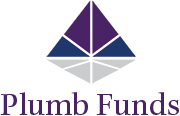
Thomas G. Plumb, CFA
Lead Fund Portfolio Manager
President, CEO, Chairman
The world lapped the anniversary of the initial pandemic breakout in the first quarter of 2021. We all recognize that in some ways the world will never be the same. But, as throughout history, a new normal replaces the old and we adjust to new realities. The stock and bond markets has been barometers reflecting change. That is why our stock portfolio emphasis is focused on identifying disruptive changes and the drivers, enablers, and beneficiaries of major innovations. We then drill down into projected growth rates, profit margins, cash flow, sustainability, and valuations.
The pandemic accelerated the adoption of many technologies and behavioral changes that were already quite strong before the crisis started. Virtual shopping, digital wallet, streaming entertainment and business meetings, cloud data storage, virtualization, software as a service business models that enhance security, reduce processing time and expense, etc. all were quite developed and immediately able to fill voids left by the economic shutdowns.
It also accelerated the process of reducing the footprint of brick-and-mortar retailers, made the very competitive restaurant industry even tougher to survive and increased the economic divide between economies and within economies. So, while China and much of the United States is poised for significant economic recovery in 2021, Europe and the Emerging Economies are still under significant pressure with muted recovery prospects for this year.
The bond market reflects supply and demand, like all other markets. In the United States government fiscal and monetary policies set the stage. The Federal Reserve has pledged to remain accommodative (keeping interest rates low) well into next year and possibly beyond. But while their initial actions last year drove down rates along the entire maturity spectrum, we have seen ten-year Treasury yields pick up over 1% since last summer.
The United States Stock markets reflected optimism over the developing recovery with the Dow Jones Industrial Average, the S&P 500 and NASDAQ all showing single digit returns for the first quarter and over 50% returns over the last twelve months.[1] [2] As the focus of investors turned to cyclical recovery plays, the growth stocks that served us so well last year took a rest.
We believe that the worldwide recovery from the pandemic induced economic shutdown will continue for the rest of 2021, albeit uneven and not universally. For example, it is estimated that five percent of all home mortgages are still in forbearance programs. Some people, companies and countries will come back stronger than ever while some will have a very difficult time dealing with deficiencies, debt levels and structural problems that became more exposed during the crisis.
We are still focusing on long-term winners with our equity investments and are keeping fixed income exposure limited to shorter duration investment grade bonds. We believe this has the potential to continue to benefit you as the year progresses.
SPXT-S&P 500 Total Return Index. S&P 500 is an unmanaged index which is widely regarded as the standard for measuring large-cap U.S. stock market performance. Calculated intraday by S&P based on the price changes and reinvested dividends of SPX with a starting date of Jan 4, 1988.
It is not possible to invest directly in an index.
The Fund’s investment objectives, risks, charges, and expenses must be considered carefully before investing. The prospectus contains this and other important information about the investment company, and it may be obtained on www.plumbfunds.com or by calling 1- 866-987-7888. Read it carefully before investing.
Past performance does not guarantee future results.
Opinions expressed are those of the author as of July 31, 2018 and are subject to change, are not intended to be a forecast of future events, a guarantee of future results, nor investment advice.
Earnings growth is the annual rate of growth of earnings from investments.
Mutual fund investing involves risk. Principal loss is possible.
The fund may invest in small and mid-sized companies which involve additional risks such as limited liquidity and greater volatility. The funds invest in foreign securities which involve greater volatility and political, economic and currency risks and differences in accounting methods. Because the funds may invest in ETFs, they are subject to additional risks that do not apply to conventional mutual funds, including the risks that the market price of an ETF’s shares may trade at a discount to its net asset value (“NAV”), an active secondary trading market may not develop or be maintained, or trading may be halted by the exchange in which they trade, which may impact a fund’s ability to sell its shares. The fund may also use options and future contracts, which have the risks of unlimited losses of the underlying holdings due to unanticipated market movements and failure to correctly predict the direction of securities prices, interest rates and currency exchange rates. The investment in options is not suitable for all investors. The Plumb Balanced Fund will invest in debt securities, which typically decrease in value when interest rates rise. This risk is usually greater for longer-term debt securities.
Fund holdings are subject to change at any time and should not be considered a recommendation to buy or sell any security.
Diversification does not assure a profit nor protect against loss in a declining market.
Plumb Funds are distributed by Quasar Distributors, LLC, distributor.
The Dow Jones Industrial Average (DJIA) is an index that tracks 30 large, publicly owned blue-chip companies trading on the New York Stock Exchange (NYSE) and the NASDAQ
Nasdaq is a global electronic marketplace for buying and selling securities. Nasdaq was created by the National Association of Securities Dealers (NASD) to enable investors to trade securities on a computerized, speedy, and transparent system, and commenced operations on February 8, 1971.
[1] https://ycharts.com/indicators/sp_500_12_month_total_return
[2] https://www.nasdaq.com/articles/a-very-strong-q1-and-2021-earnings-picture-2021-03-26
